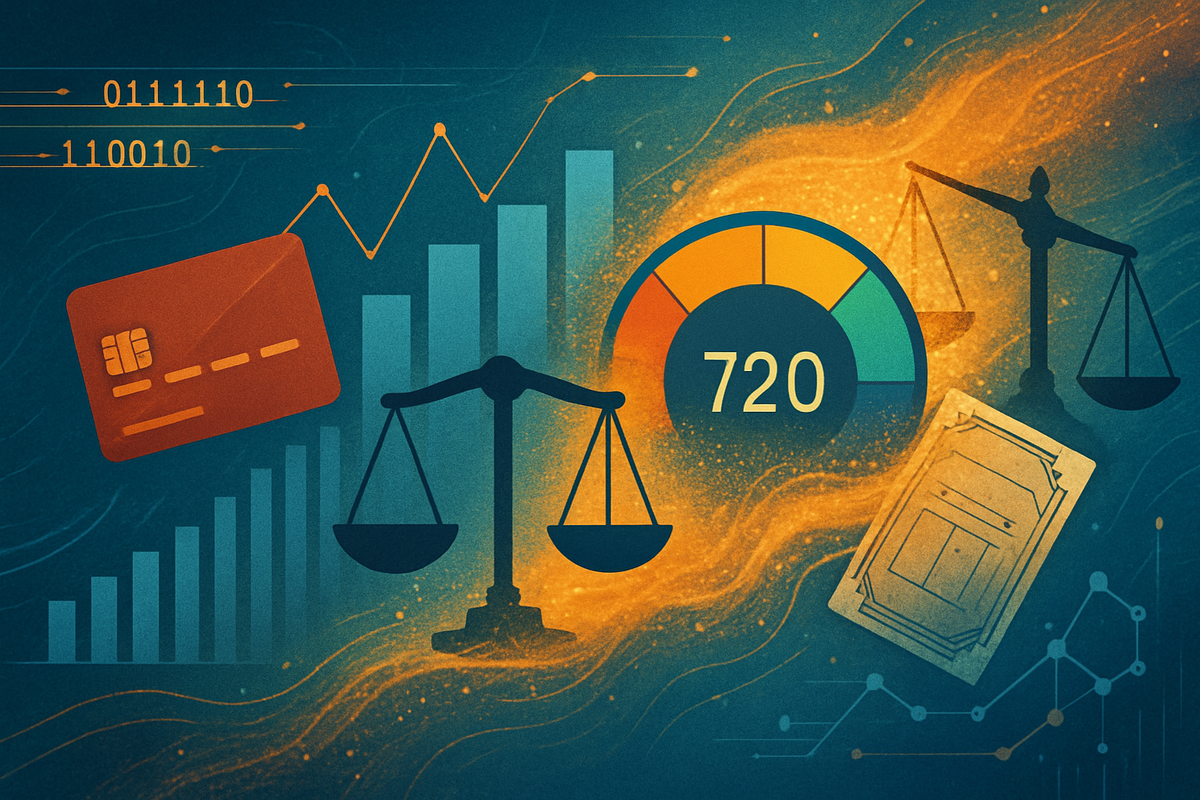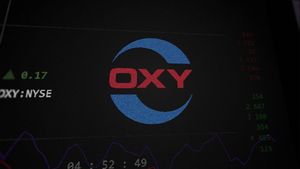
The credit-score market is currently undergoing a monumental transformation, driven by Fair Isaac Corporation's (FICO) new direct licensing program and a wave of significant regulatory changes. Effective October 1, 2025, FICO's "FICO Mortgage Direct License Program" has fundamentally altered how mortgage lenders and tri-merge resellers acquire FICO Scores, allowing them to bypass traditional intermediaries. This strategic pivot, coupled with the Federal Housing Finance Agency's (FHFA) approval of VantageScore 4.0 and the Consumer Financial Protection Bureau's (CFPB) ban on medical debt from credit reports, signals a new era of increased competition, transparency, and expanded credit access. The immediate implications, as observed on October 2, 2025, include a surge in FICO's stock while shares of major credit bureaus plummeted, highlighting the profound reordering of power within this critical financial sector.
A New Era for Credit Scoring: FICO's Direct Approach and Regulatory Mandates
The catalyst for this market upheaval is FICO's bold introduction of its "FICO Mortgage Direct License Program," which became effective on October 1, 2025. This program empowers mortgage lenders and tri-merge resellers to license FICO Scores directly from FICO, circumventing the long-standing practice of obtaining them through the three nationwide credit bureaus: Experian (LON: EXPN), Equifax (NYSE: EFX), and TransUnion (NYSE: TRU). FICO's stated goals for this initiative are to foster greater price transparency, inject competition into the mortgage lending ecosystem, and reduce costs for lenders by eliminating what it terms "unnecessary mark-ups" previously imposed by the credit bureaus.
Under the new model, FICO offers two distinct pricing structures: a performance-based model featuring a $4.95 royalty fee per score and a $33 funded-loan fee per borrower per score (replacing re-issuance charges), or an alternative per-score model maintaining a $10 fee, mirroring previous bureau charges. The wholesale royalty for mortgage originations in 2025 is set at $4.95 per score. This move positions FICO to capture more direct revenue and streamline the process for lenders, ultimately benefiting consumers through potentially more competitive mortgage rates.
Simultaneously, the credit-score market is grappling with several impactful regulatory changes. A pivotal moment occurred in 2025 with the FHFA's approval of VantageScore 4.0 for conforming mortgages, shattering FICO's long-held monopoly in this sector. The FHFA also announced that lenders would have the option to use two or three credit reports, coinciding with the transition from the Classic FICO model to FICO 10T. Furthermore, the CFPB finalized a rule, effective March 17, 2025, banning medical bills from credit reports and credit scores, a change projected to boost credit scores for affected consumers by an average of 20 points. The CFPB's small business lending data collection rule also aims to enhance transparency, while a broader regulatory push, including from entities like Fannie Mae and Freddie Mac, emphasizes the integration of alternative data (e.g., cash flow, rental payments) into credit scoring models, exemplified by FICO's UltraFICO score.
The immediate market reaction on October 2, 2025, was stark. FICO's (NYSE: FICO) stock experienced a dramatic surge, signaling robust investor confidence in its new strategy and potential for increased profitability. Conversely, shares of Experian, Equifax, and TransUnion plummeted significantly, with analysts estimating a potential 10% to 15% hit to their earnings due to the loss of mark-up revenue. This sharp divergence underscores the immediate redistribution of value and influence within the credit scoring industry, prompting expectations of strategic counter-moves from the credit bureaus. Mortgage lenders, on the other hand, are poised to benefit from reduced costs and enhanced price transparency, which could translate into more favorable rates for borrowers. Consumers stand to gain from higher scores due to the medical debt rule and expanded credit access through increased competition and alternative data models, though the shift to FICO 10T could disadvantage some borrowers with recent delinquencies.
Shifting Fortunes: Who Wins and Who Loses in the Credit-Score Realignment
The seismic shifts in the credit-score market are creating clear winners and losers among key stakeholders, fundamentally altering financial trajectories and strategic imperatives as of October 2, 2025.
Fair Isaac Corporation (NYSE: FICO) emerges as a strategic winner. Its "FICO Mortgage Direct License Program," effective October 1, 2025, allows direct licensing of scores, bypassing credit bureaus. This move is projected to generate at least $300 million in incremental revenue for FICO in calendar year 2026, potentially boosting its adjusted EPS growth by 20-25% in fiscal year 2026. FICO's stock soared by 14.63% to 24% in early trading on October 2, 2025, reflecting strong investor confidence. By directly engaging with lenders, FICO strengthens its market control and captures a larger share of the revenue from its proprietary scores, responding to long-standing industry calls for transparency and also acting as a defensive maneuver against regulatory pressures concerning its historical pricing practices.
Conversely, the three major credit bureaus – Experian (LON: EXPN), Equifax (NYSE: EFX), and TransUnion (NYSE: TRU) – are positioned as significant losers in the immediate aftermath. Their shares plummeted on October 2, 2025, with Experian down 8%, and Equifax and TransUnion seeing drops of 9-12%. Analysts estimate FICO's new model could impact credit bureau earnings by an average of 10% to 15%, as it eliminates the substantial mark-ups they historically applied to FICO scores. This represents a severe threat to their pricing power and margins, wiping out billions in market capitalization for Equifax alone. While the FHFA's July 2025 decision to allow VantageScore 4.0 (a joint venture of the three bureaus) for conforming mortgages offers a potential counterbalance and increased competition for FICO, the immediate financial hit from FICO's direct licensing program is profound, necessitating a re-evaluation of their business models and service offerings.
Mortgage lenders are clear beneficiaries. FICO's direct licensing program offers immediate cost savings and greater price transparency. The $4.95 royalty fee per score under the performance model can reduce average per-score fees by 50%, achieved by eliminating credit bureau mark-ups. The $33 per borrower funded loan fee replaces previous re-issue fees, enabling broader use in the origination market. This provides lenders with more choice in acquiring FICO scores, either directly or through bureaus. Furthermore, the FHFA's adoption of VantageScore 4.0 means lenders can now select between Classic FICO and VantageScore 4.0, potentially leading to lower Loan-Level Price Adjustments (LLPAs) by choosing the higher score. This "lender choice" introduces robust competition in credit scoring and could streamline the loan approval process, although some industry observers anticipate FICO might still raise prices in other segments in the coming years.
For consumers, the impact is a mixed bag with potential long-term benefits. The CFPB's rule, finalized in February 2025, eliminating unpaid medical debt from credit reports, is a significant win, expected to improve credit scores for many and simplify loan approvals. California also enacted similar legislation effective January 1, 2025. The increased competition from VantageScore and the regulatory push for alternative credit data (like telecom and utility payments, now allowed in models like FICO 10T and VantageScore 4.0) are poised to enhance access to credit for millions of previously underserved borrowers. However, the incorporation of Buy Now, Pay Later (BNPL) loan data into FICO calculations (starting Fall 2025) could negatively impact scores for users struggling with late payments. Additionally, the transition to FICO 10T, with its emphasis on recent payment history and utilization, might disadvantage borrowers with recent delinquencies or high credit utilization, and some lenders may require higher credit scores for the best rates in 2025. Overall consumer credit health remains stable in mid-2025, but these changes introduce new complexities and opportunities for individuals to manage their credit profiles.
A Broader Transformation: Industry Trends and Regulatory Tides
The current upheaval in the credit-score market, spearheaded by FICO's strategic shift and a confluence of regulatory mandates, signifies a broader, irreversible transformation of how creditworthiness is assessed and managed. This moment, as of October 2, 2025, is not merely about pricing models but reflects deep-seated industry trends and evolving policy priorities.
At its core, this event underscores a powerful trend towards financial inclusion and the integration of alternative data and AI/ML. Regulators and industry players are increasingly recognizing the limitations of traditional credit files, particularly for "thin-file" or "credit invisible" populations. The FHFA's approval of VantageScore 4.0, which emphasizes alternative data like rent and utility payments, and the broader push for FICO's UltraFICO score leveraging bank account data, are direct responses. Artificial intelligence and machine learning are becoming indispensable tools for processing these diverse datasets, enabling more dynamic risk assessment, real-time credit decisions, and enhanced fraud detection. This technological leap parallels historical moments like FICO's own founding in 1956, which revolutionized lending through statistical methods, replacing less standardized practices.
The ripple effects on competitors and partners are substantial. The credit bureaus, Experian, Equifax, and TransUnion, facing a significant revenue hit from FICO's direct licensing, are now under immense pressure to innovate. This will likely accelerate their investment in and promotion of their proprietary scoring models, particularly VantageScore, which has already seen a sharp increase in usage. Strategic alliances between these bureaus, fintech innovators, and tech companies are also likely to proliferate as they seek to leverage new data sources and technologies to diversify their offerings. Mortgage lenders, while benefiting from reduced costs and increased choice, face the operational challenge of integrating and managing multiple scoring models and data sources, requiring updates to their origination platforms and pricing engines.
From a regulatory and policy perspective, these shifts are likely to intensify scrutiny. FICO's historical market dominance and pricing practices have long drawn criticism, and while its direct licensing aims for transparency, it's also seen as solidifying its market influence, potentially inviting further antitrust attention. The increased reliance on AI and alternative data also raises critical concerns about data privacy, algorithmic bias, and fairness in lending. Regulators, including the CFPB, are expected to focus on establishing robust standards for responsible AI and data protection to ensure that these advanced models do not inadvertently perpetuate or create new forms of discrimination. The coexistence of multiple scoring models will also necessitate clear regulatory guidance on consistency and consumer protection.
Historically, the credit market has undergone similar periods of significant change driven by both technological advancement and regulatory intervention. The Equal Credit Opportunity Act (ECOA) and the Fair Credit Reporting Act (FCRA) fundamentally reshaped how credit information is used. The current regulatory push, including the FHFA's move to accept VantageScore and the CFPB's rules on medical debt, represents a continuation of these efforts to balance market efficiency with consumer protection and financial inclusion. This period of disruption is indicative of a maturing market striving for greater fairness, transparency, and accessibility, echoing broader societal demands for equitable financial systems.
The Road Ahead: Navigating a Dynamic Credit Landscape
The credit-score market, as of October 2, 2025, stands at an inflection point, with FICO's strategic direct licensing and a wave of regulatory changes setting the stage for a period of intense evolution. Both short-term adaptations and long-term strategic pivots will be crucial for all stakeholders.
In the short term (next 1-2 years), FICO (NYSE: FICO) is poised for increased revenue and strengthened dominance in the mortgage sector, potentially exploring similar direct licensing models in other lending verticals. The credit bureaus—Experian (LON: EXPN), Equifax (NYSE: EFX), and TransUnion (NYSE: TRU)—face immediate revenue erosion and will be compelled to aggressively promote VantageScore 4.0, enhance their alternative data services, and diversify into broader data analytics and fraud prevention solutions. Mortgage lenders will benefit from reduced FICO score costs and increased transparency, but must invest in system upgrades to accommodate FICO 10T and VantageScore 4.0. Consumers can expect potential lower mortgage closing costs, expanded credit access due to the removal of medical debt from reports, and the inclusion of alternative data in newer scoring models, though new complexities from BNPL data and shifting lender requirements will emerge. The competitive landscape among scoring models is set to intensify significantly.
Looking at the long term (3-5+ years), the market will continue its inexorable march towards more holistic, dynamic, and real-time credit assessments. This will involve the pervasive integration of a wider array of data points, including open banking data, utility payments, and potentially even psychometric and digital footprint analysis. Hybrid models, combining traditional scores with enhanced FICO/VantageScore models and proprietary lender AI/ML-driven models, are likely to become the standard. This evolution promises significantly increased financial inclusion for previously underserved populations globally. The market may also witness the emergence of new fintech players specializing in alternative data analytics, alongside potential consolidation among existing credit technology providers seeking to offer integrated solutions. However, continuous regulatory scrutiny will remain a constant, focusing on data privacy, algorithmic fairness, and transparency.
Strategic pivots are paramount. FICO's move is a clear reassertion of control and revenue capture, and it will need to continually innovate its models to integrate more alternative data. The credit bureaus must drastically diversify their revenue streams, investing heavily in proprietary scoring models and value-added data solutions. Lenders must prioritize technological upgrades, develop in-house AI/ML capabilities for customized risk assessments, and navigate the complex, evolving regulatory landscape. New alternative credit scoring companies have a significant opportunity to grow by focusing on niche markets, developing robust AI/ML models, ensuring strong regulatory compliance, and forming strategic partnerships.
Market opportunities abound in financial inclusion, leveraging advanced data analytics for more personalized risk assessments, and achieving operational efficiencies through AI-driven real-time decisions. However, significant challenges loom, including navigating complex data privacy and security concerns, ensuring regulatory compliance across a rapidly changing landscape, mitigating algorithmic bias in AI/ML models, and managing the integration complexity and substantial costs of adapting to new technologies and requirements.
Several potential scenarios could unfold: FICO could solidify its enduring dominance while bureaus evolve into diversified data providers; the market could become more fragmented and specialized with lenders using various models; further regulatory interventions could reshape the industry; or a hybrid ecosystem, heavily facilitated by open banking, could emerge, offering a balance of efficiency, accuracy, and inclusion. The credit-score market is undeniably at an inflection point, promising a future characterized by increased competition, greater transparency, enhanced financial inclusion, and a more dynamic approach to assessing creditworthiness.
Conclusion: A New Dawn for Credit Assessment
The confluence of FICO's new direct licensing model and the pervasive regulatory shifts marks a watershed moment for the credit-score market, fundamentally altering its structure and trajectory as of October 2, 2025. Key takeaways include FICO's successful reassertion of control and revenue capture in the mortgage sector, the significant financial pressure on traditional credit bureaus, and the clear benefits for mortgage lenders through cost savings and increased transparency. Consumers stand to gain from enhanced credit access and score improvements driven by regulatory changes, though new data integrations introduce complexities.
Moving forward, the market will be characterized by intensified competition, a relentless pursuit of financial inclusion through alternative data and AI, and continuous regulatory oversight. The shift from a monopolistic or oligopolistic structure to a more diversified and technologically advanced ecosystem is well underway. Investors should closely watch the strategic responses of the credit bureaus, particularly their innovation in proprietary scoring and data services. The pace of technological adoption by lenders, especially in integrating new models and AI capabilities, will also be critical. Furthermore, monitoring regulatory developments concerning data privacy, algorithmic bias, and the standardization of new credit assessment methods will be essential.
The lasting impact of these changes will be a credit market that is more dynamic, transparent, and potentially more equitable. While the transition will undoubtedly bring challenges and require significant adaptation, the ultimate outcome is likely to be a more robust and inclusive financial system, better equipped to assess the diverse financial realities of today's consumers.
This content is intended for informational purposes only and is not financial advice.





